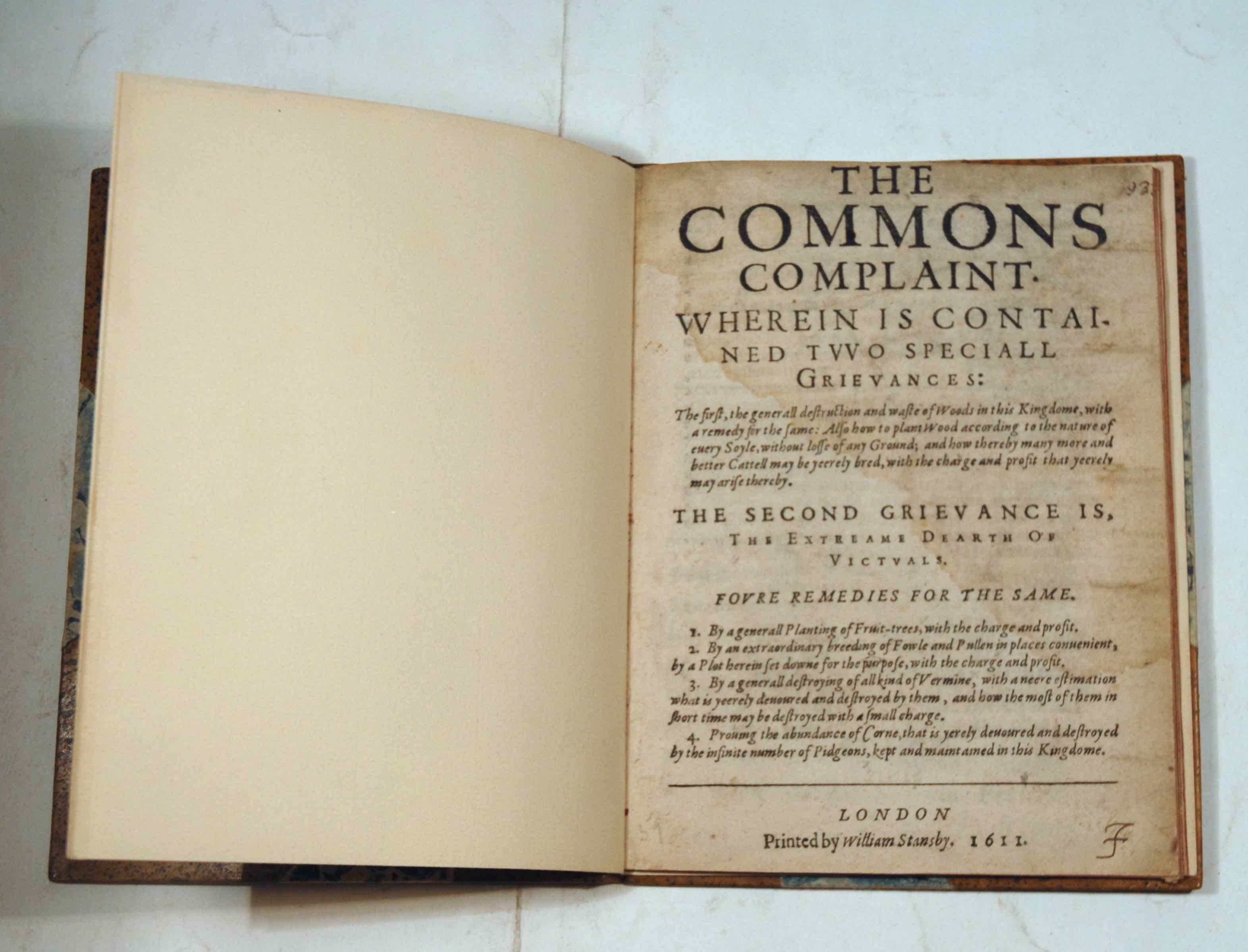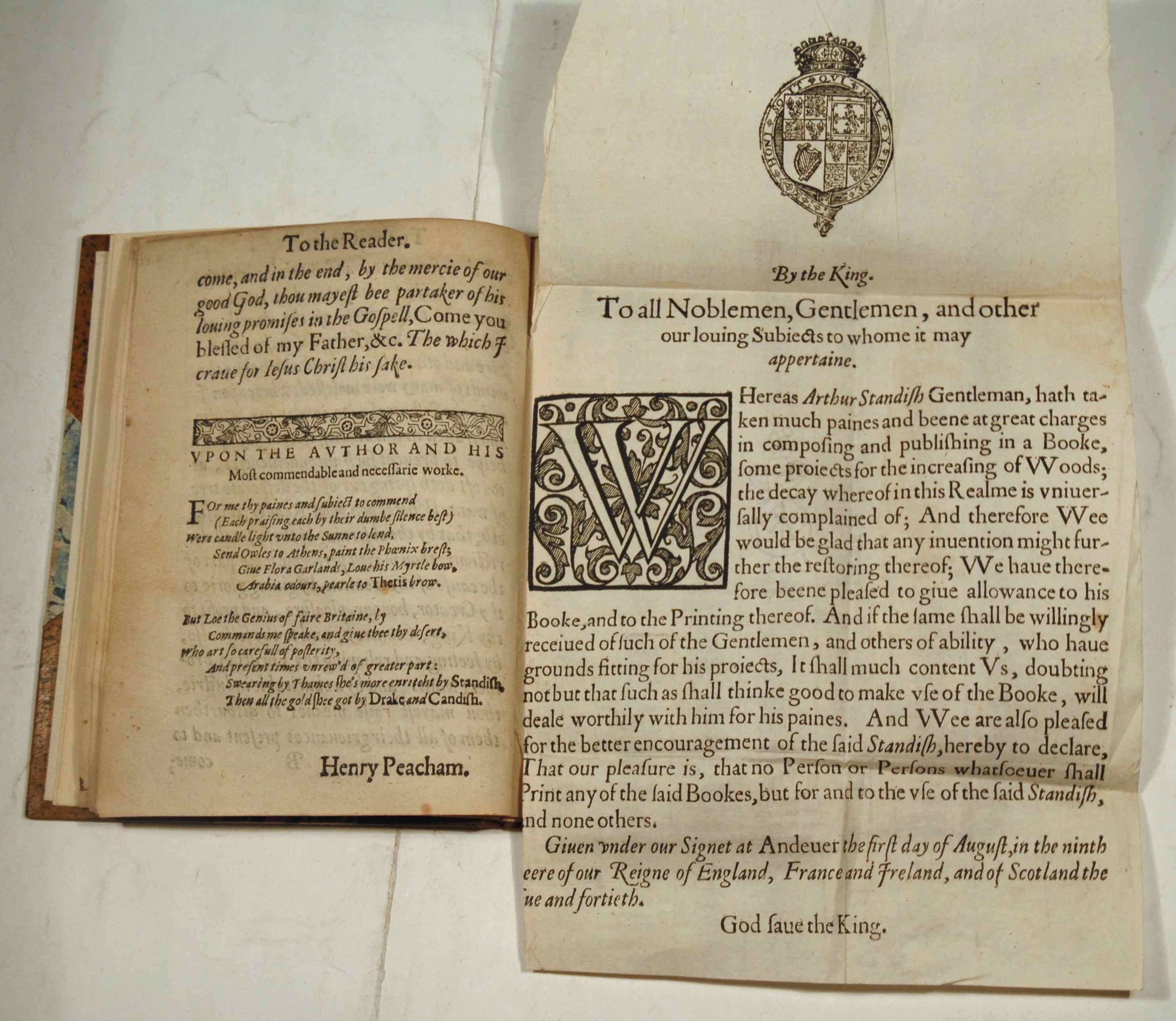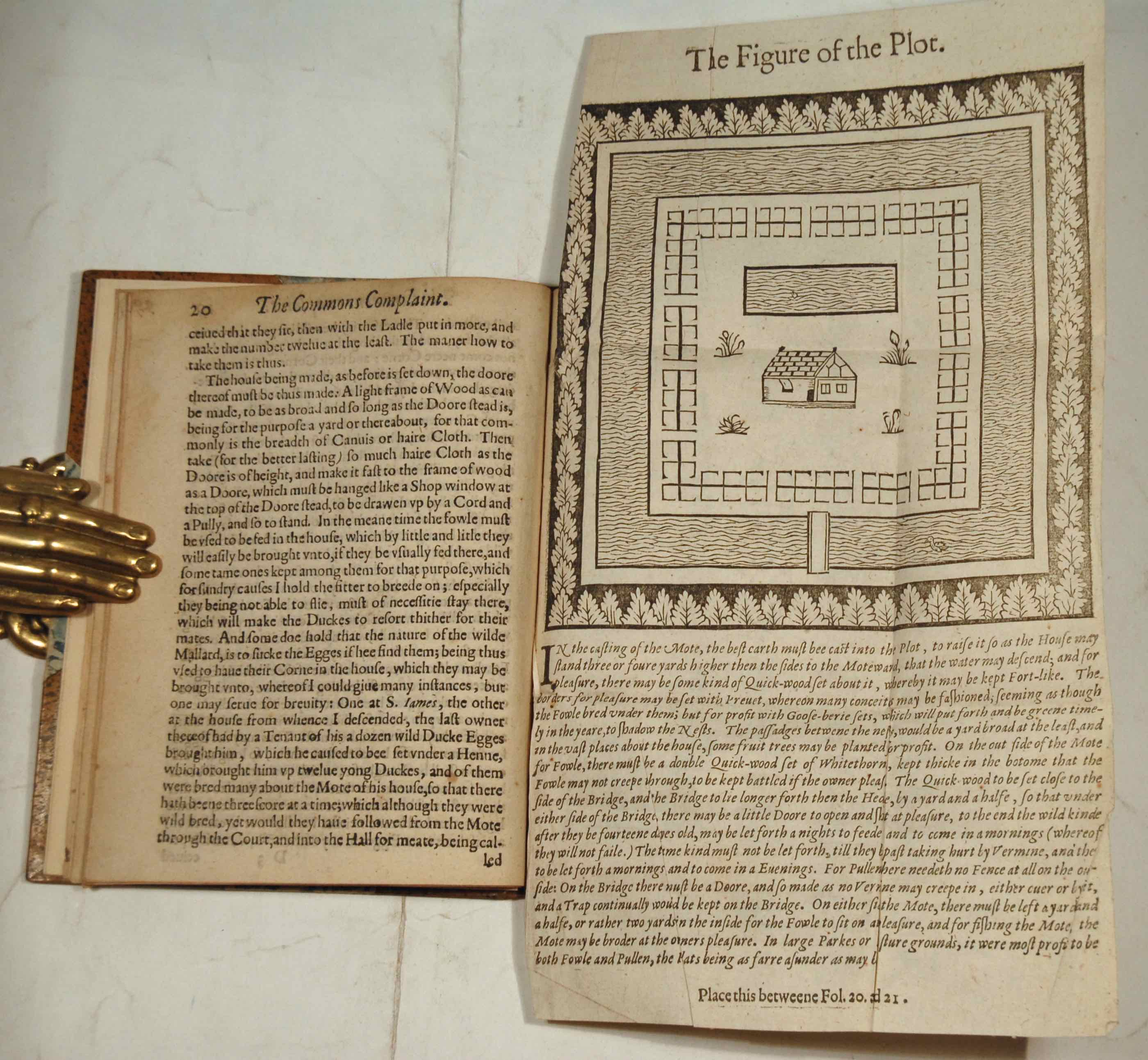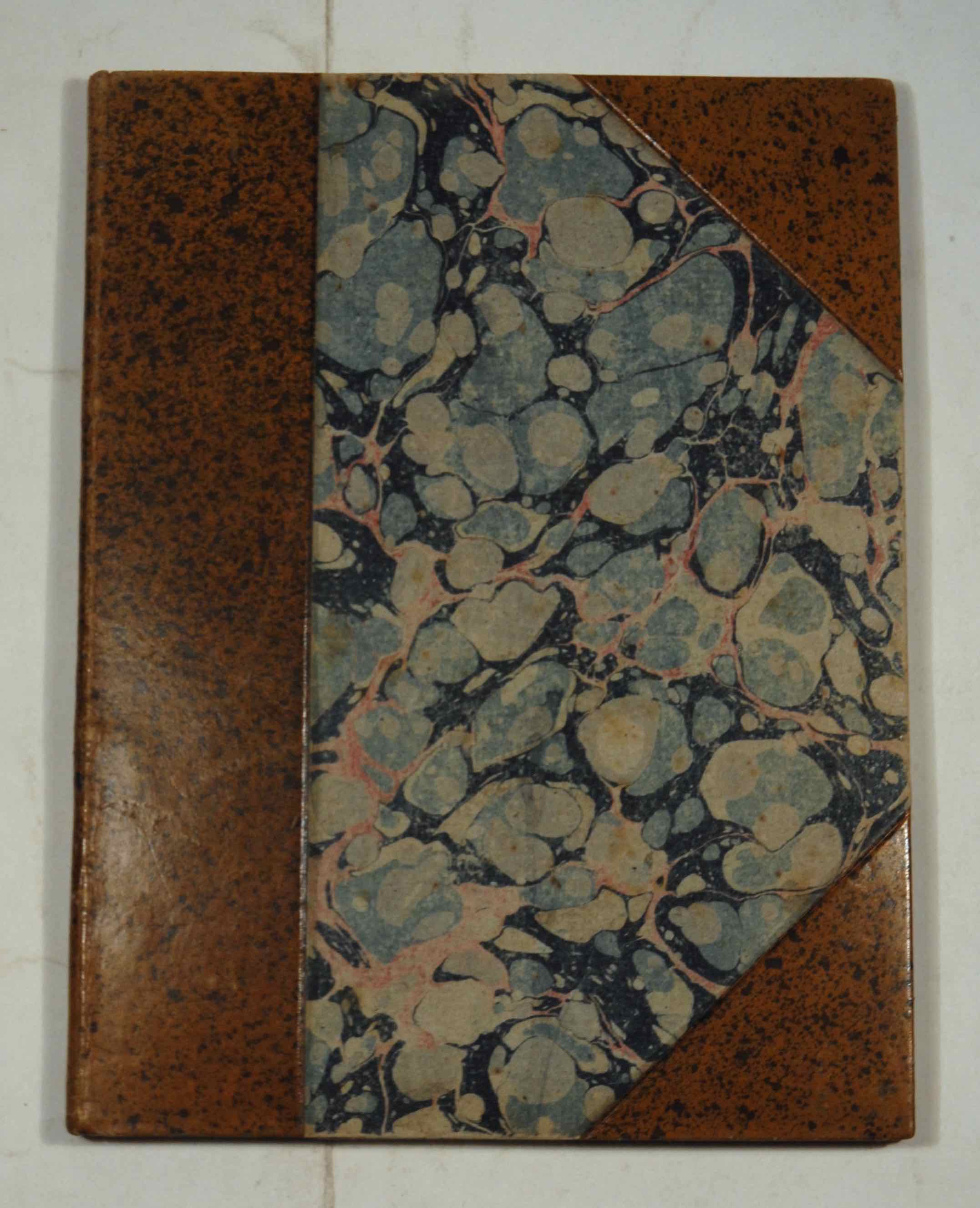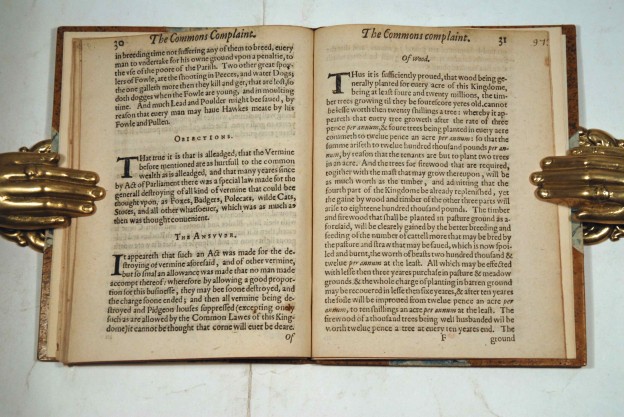STANDISH, Arthur
A PRIME MINISTER\\\\\\\'S FORESTRY
The commons complaint. Wherein is contained tvvo speciall grieuances..
London, Printed by William Stansby, 1611£4,950.00
4to. pp. [x], 34. A-E F². Roman letter, some Italic. folding woodcut, ‘The Figure of the Plot’ a fowl-house, and large folding woodcut imprimatur leaf with woodcut of the Royal arms at head and large woodcut initial. Woodcut and typographical head-pieces and ornaments, floriated woodcut initials, C18th engraved armorial bookplate on verso of title of John, Earl of Bute. Light age yellowing, some light water-staining, t-p a little dust soiled at head, cut close at head, very occasionally just touching headline. A good copy in modern three-quarter speckled calf over marbled boards.
Very rare second edition of this important work, a rare variant published with a folding imprimatur leaf, not found in the British Library. “Arthur Standish reflected the general concern at the increasing shortage of timber in The Commons Complaint which contained two special grievances, as noted in the subtitles: ‘the first, general destruction and waste of woods in this Kingdom with a remedy for the same: also how to plant wood according to the nature of every soile’ The second concerned ‘the extreme dearth of victuals’ and was to be remedied by planting fruit trees, breeding more poultry, and destroying vermin.” Peter McDonald, J. P. Lassoie. ‘The Literature of Forestry and Agroforestry.’
“Church’s contemporary was Arthur Standish, about whom we know next to nothing. He may have been involved in some way in the Crown surveys, given that in 1611 he wrote that he had been traversing the country investigating the themes on which he would publish for the previous four years. In a series of texts (or more correctly, one gradually expanded text), Standish provided a schema for enhancing the national wood yields such that ‘the whole Kingdom hereby may be preserved from the ruine that is greatly feared.’ His Work differed from Church’s in that it provided rather less detail on arboriculture, but a rather grander scheme for increasing output that would benefit the entire economy, freeing up land and resources for alternative uses, and through which the careful setting of pollards and hedgerows could eliminate the need for coppice-woods altogether. Standish claimed some Royal encouragement and won a laudatory preface from poet and engraver Henry Peacham; but his plans, like so many projects of the time, soon lapsed into obscurity. What however marks out Church and Standish is their intent: they did not speak of ‘improvement’ but ‘profit’, but the core of their argument was directed towards the increase of output through better practice. Increased revenue was thus incidental to countering the scarcity of an essential resource. Standish was one of the first to differentiate himself from a slow drip of handbooks for very specific crafts, such as beekeeping, tree-grafting or seed-setting, by projecting a grander project of national renewal.” Richard W. Hoyl ‘Custom, Improvement and the Landscape in Early Modern Britain’.
John Stuart, 3rd Earl of Bute (1713 – 1792), styled Lord Mount Stuart before 1723, was a Scottish nobleman who served as Prime Minister of Great Britain (1762–1763) under George III, and was arguably the last important ‘favourite’ in British politics. a very rare and important work with appropriate provenance.
STC 23201. ESTC S110882. Fussell p.33; Goldsmiths’ 401; Henrey 351.In stock



